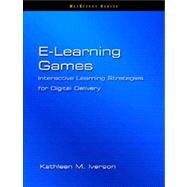
Kathleen Iverson is Associate Professor of Training and Development at Roosevelt University located in Chicago, Illinois, where she designs and delivers both online and traditional courses to graduate students in e-learning and training design, delivery, and evaluation. Dr. Iverson helped initiate Roosevelt University's highly successful, fully online master's degree program to prepare students for careers in training, e-learning, and organization development. She holds a Ph.D. from Loyola University, Chicago, in Training and Organization Development. In addition to her academic work, she has published both theoretical and empirical studies relating to distance learning and has consulted to major corporations including Hotel Sofitel, Marriott, Alliant, Chicago Convention and Tourism Bureau, and McDonald's Corporation.
| Welcome to Active E Learning | |
| Interactive E Learning | |
| Constructivist E Learning Design | |
| Session Openers | |
| Scenario Learning Activities | |
| Peer Learning | |
| Content Review and Practice | |
| Group Discussion | |
| Idea Generation | |
| Closers | |
| Table of Contents provided by Publisher. All Rights Reserved. |
The New copy of this book will include any supplemental materials advertised. Please check the title of the book to determine if it should include any access cards, study guides, lab manuals, CDs, etc.
The Used, Rental and eBook copies of this book are not guaranteed to include any supplemental materials. Typically, only the book itself is included. This is true even if the title states it includes any access cards, study guides, lab manuals, CDs, etc.